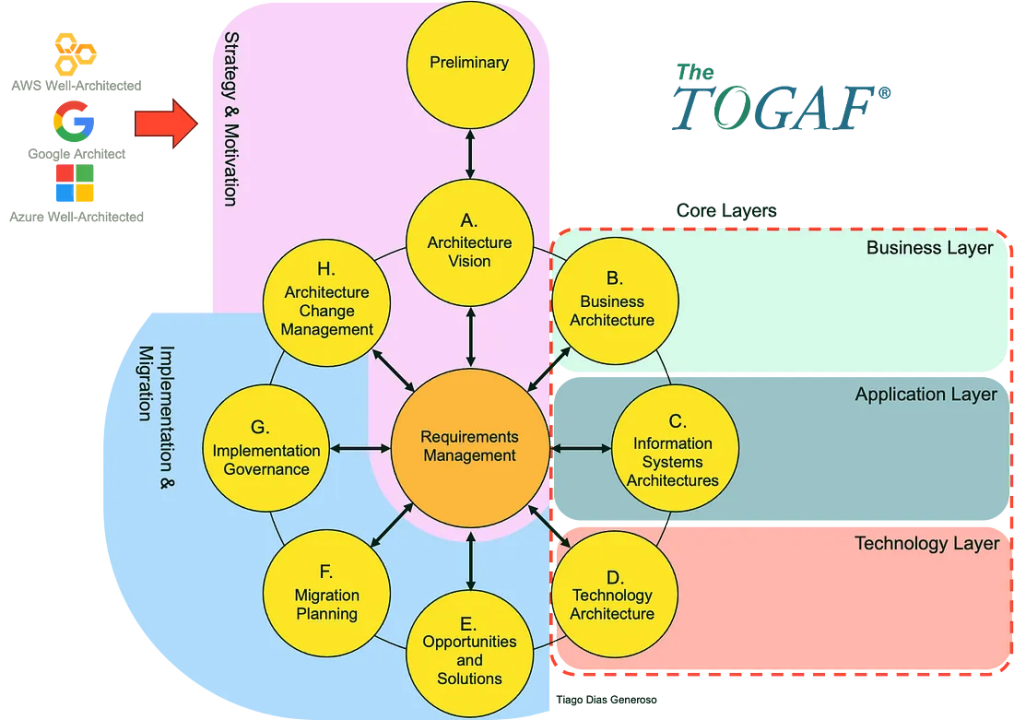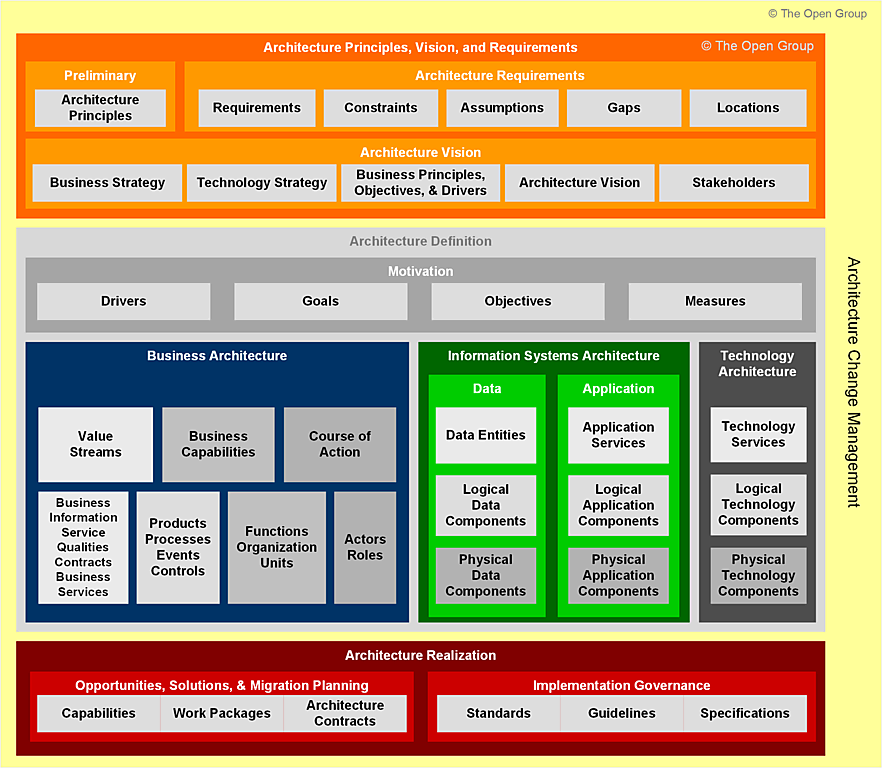TOGAF - The Open Group Architecture Framework

Introduction to TOGAF
The Architects uses TOGAF – The Open Group Architecture Framework – to develop the existing architecture and the to-be architecture for our clients. According to TOGAF, the effectiveness of an IT system is measured by its ability to address the concerns of key people in the organization. The unit responsible for designing the enterprise architecture for a business will be the enterprise architect’s office operating independently or a separate department within the business reporting directly to the General Director.
Therefore, in order to be able to advise and design an effective IT system that meets all the concerns and requirements of stakeholders, the Enterprise architect and his/her team will have to perform the following 3 tasks:
- Work directly, identify and refine stakeholder requirements.
- Develop views and architectural perspectives that show how stakeholders’ concerns and requirements will be addressed.
- Make suggestions for improvements, pointing out trade-off points to reconcile conflicting criteria of different stakeholders.
Benefits to Our Clients
I. More effective and efficient Digital Transformation and IT operations:
- Lower software development, support, and maintenance costs
- Bringing all components of the enterprise into a harmonized environment.
- Improved interoperability and easier system and network management.
- Improved ability to address critical enterprise-wide issues like security.
II. Better return on existing investment, reduced risk for future investment:
- Reduced complexity in the business and IT
- Maximum return on investment in existing business and IT infrastructure.
- The flexibility to make, buy, or out-source business and IT solutions.
III. Faster, simpler, and cheaper procurement:
- Buying decisions are simpler, because the information governing procurement is readily available in a coherent plan.
- The procurement process is faster – maximizing procurement speed and flexibility without sacrificing architectural coherence.
- The ability to procure heterogeneous, multi-vendor open systems

